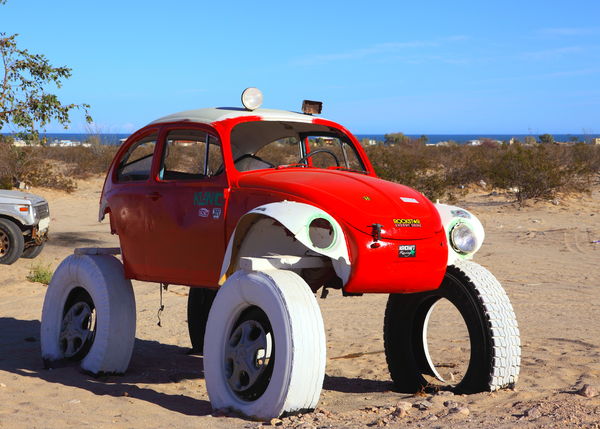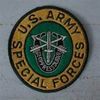How sharp should I expect with Canon prime lens?
Dec 18, 2014 00:48:02 #
I am a neophyte still experimenting with new equipment. I am using a Canon 70d with a 400 mm 5.6 Canon lens. I am shooting primarily stationary birds at 50-100 feet in bright sunlight. Most commonly I am shooting at 5.6-8.0 at 1/500-1/1000 seconds handheld. Iso is 200-800. I try to autofocus on their eyes. When I load the pictures how sharp should I expect the subject to be? 100%? 200%? Unfortunately I cannot post anything because of poor internet connectivity right now but will try later.
The pictures I see on UGH appear to be much sharper than mine. I have not been able to test my lens for microadjustment to the camera yet. No tripod until I get home.
Thanks in advance for any thoughts.
Jim in Baja California
The pictures I see on UGH appear to be much sharper than mine. I have not been able to test my lens for microadjustment to the camera yet. No tripod until I get home.
Thanks in advance for any thoughts.
Jim in Baja California
Dec 18, 2014 00:53:22 #
Welcome to UHH, Jim.
1/500 is pretty slow handheld, with a 400mm lens (and slow enough to get some motion blur just from the bird's movement, even if you're handholding is rock solid).
You'll probably find you have better sharpness (assuming there's not a focusing issue or micro-adjustment needed) if you bump up the ISO (I mostly shoot at 800 unless it's really bright) and aperture at f5.6 or f6.3 - close to or wide open.
That should keep your shutter speed at 1/1000 or faster in most light.
1/500 is pretty slow handheld, with a 400mm lens (and slow enough to get some motion blur just from the bird's movement, even if you're handholding is rock solid).
You'll probably find you have better sharpness (assuming there's not a focusing issue or micro-adjustment needed) if you bump up the ISO (I mostly shoot at 800 unless it's really bright) and aperture at f5.6 or f6.3 - close to or wide open.
That should keep your shutter speed at 1/1000 or faster in most light.
Dec 18, 2014 00:57:41 #
Dec 18, 2014 01:05:51 #
bajadreamer wrote:
... I am using a Canon 70d with a 400 mm 5.6 Canon lens. I am shooting primarily stationary birds at 50-100 feet in bright sunlight. ... at 5.6-8.0 at 1/500-1/1000 seconds handheld. Iso is 200-800. I try to autofocus on their eyes. ...The pictures I see on UGH appear to be much sharper than mine. I have not been able to test my lens for microadjustment to the camera yet. ...
The L USM is an excellant sharp lens even wide open and the 70D is adequate.
Your images should be very sharp once you learn to focus and hold it steady.
Dec 18, 2014 01:24:53 #
Sharpness and detail of plumage has a great deal to do with subject distance. I know its old, but get closer if you can or use a longer lens.
Dec 18, 2014 02:19:58 #
Haydon wrote:
Sharpness and detail of plumage has a great deal to do with subject distance. I know its old, but get closer if you can or use a longer lens.
Baja, yes. I agree with Haydon. Assuming you are doing everything right, you just need to be close enough. Most of the problems I see here on birds is from just being too far away then trying to crop a photo out of it. Not gonna happen. There is no substitute for being close enough or having a long lens, preferably both. For small birds 400mm is pretty borderline. 50' from a robin is too far.
Posting a pic will let us see if there are other problems.
Here's a pic, not for sharpness, but to make you feel at home. Taken on the Gonzaga road. Baja is one of my favorite destinations!!
SS
Dec 18, 2014 03:19:47 #
Why would anyone go to Baja? Just come to East Los Angeles, actually almost all of Southern California, and get all the Mexican ambiance you can handle.
Dec 18, 2014 10:24:56 #
Old rule of thumb - to prevent blur, set your shutter speed double the focal length...
Dec 18, 2014 12:23:43 #
Thank you for your replies. I will post some pictures and post individual replies later as I am sitting in an RV park in SoCal right now and have virtually no internet speed. Typing and posting on my ancient tiny tablet is tough to say the least! I will try to increase my shutter speed and up my Iso to see how that works. It is unlikely I will ever print any of these photos so maybe I can get away with isos of 800-1600??
Dec 18, 2014 13:10:54 #
Your 70D will handle ISO-800 to IS0-1600 just fine. As suggested, give it a shot to achieve the faster shutter in the 1/800 to 1/1000 range.
Dec 18, 2014 14:07:06 #
CHG_CANON wrote:
Your 70D will handle ISO-800 to IS0-1600 just fine. As suggested, give it a shot to achieve the faster shutter in the 1/800 to 1/1000 range.
the newer small format cameras tend to have aggressive noise reduction built in which softens your shots so use the lowest ISO you can get by with.
Dec 18, 2014 14:10:37 #
oldtigger wrote:
the newer small format cameras tend to have aggressive noise reduction built in which softens your shots so use the lowest ISO you can get by with.
Isn't that only a factor if you shoot JPEG, not RAW?
Dec 18, 2014 14:43:39 #
oldtigger wrote:
the newer small format cameras tend to have aggressive noise reduction built in which softens your shots so use the lowest ISO you can get by with.
Allen Hirsch wrote:
Isn't that only a factor of you shoot JPEG, not RAW?
Good points. There is a High ISO NR setting in the 70D (high / standard / low / disable). I shoot RAW & JPEG with a body also having this feature and I have it disabled so I'd forgotten about it.
The 70D sensor better handles a higher ISO not because of noise reduction but rather better overall performance. The review I just consulted also indicates turning the HIGH ISO NR to off so that you can assess the overall image results and seek your own balance of NR and sharpness settings, whether working on JPEG or RAW.
From the same review (Bryan Carnathan - the-digital-picture.com) - With the highest density DSLR sensor available, the EOS 70D now leads the Canon pack for "reach". When you are lens focal length limited, a more-dense sensor can deliver more resolution in your final crop. Bird photographers take note.
Dec 18, 2014 14:51:10 #
Allen Hirsch wrote:
Isn't that only a factor of you shoot JPEG, not RAW?
there is a noise reduction in making up the jpg which you can control in most cameras which causes a softening.
There are also adjustments performed on the raw file to protect the image from shooters who think sensors can be used at something other than native level ISO.
Dec 18, 2014 15:02:54 #
To summarize what has been told to me.
Get up to at least a speed of 1/1000 (the faster the better.)
Practice practice practice
If you have ever fired a weapon, use the same techniques (breathe exhale, breathe, exhale, hold after exhalation, slowly depress the shutter.)
Practice, practice, practice.
Get up to at least a speed of 1/1000 (the faster the better.)
Practice practice practice
If you have ever fired a weapon, use the same techniques (breathe exhale, breathe, exhale, hold after exhalation, slowly depress the shutter.)
Practice, practice, practice.
If you want to reply, then register here. Registration is free and your account is created instantly, so you can post right away.










